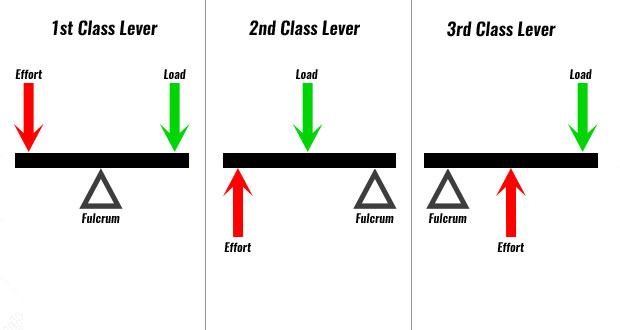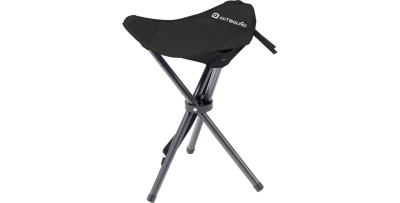
Master Chen Zhonghua talked about Practical Method’s internal power coming from the ability to have a lever in any action. There are certain actions that are relatively easy to recognize the formation of a lever. For others, such as a punch, they are not so easily conceivable. However, we must retentlessly look for a resolution.
A lever is a simple machine consisting of a beam or rigid rod pivoted at a fixed hinge, or fulcrum. A rotation can be viewed as a continuous lever.
As shown in the diagram above, there are 3 classes of lever as commonly defined. Taiji movements are made up of them, the following only illustrates one example in the form for each class.
Class 1 撬 (qiào)
The fulcrum is placed between the load and the effort, while the effort and the load are in the same direction,
e.g. A tidder todder, a balance scale, a pair of scissors.
In Second Closing, we use the right foot to cause the left arm to rotate around the left shoulder-kua axis to the left.
Class 2 铡 (zhá)
The load is placed between the fulcrum and the effort, while the effort and the load are in the opposite direction,
e.g. A wheel barrel, a nut cracker, a paper trimmer.
In Brush the Knee in Oblique Stance, we press down the left shoulder to the left kua, this is much like the paper trimmer action.
Class 3 夹 (jiá)
The effort is placed between the fulcrum and the load, while the effort and the load are in the opposite direction,
e.g. A stapler, a hockey stick, a pair of tongs.
In Buddha’s Warrior Attendant Pound Mortar, after the right hand goes to the right, we use the right elbow to lead and bring the arm to the centre.
NOTE: If we ignore the placement of the load and effort, the action of the lever itself can look exactly the same between class 2 and class 3.
We often can see only a partial system, we must figure out a way to see the other part.
If a missile is fired, it has the ability to travel 6000 miles, but it lands on a target that is only 1000 miles away. Its destuctive power is more at a closer distance, the equal opposite force that allows it to travel 6000 miles must be there somewhere.
Getting this idea will allow us to look at our actions differently. See the diagrams at http://practicalmethod.com/2012/10/yin-yang-split-online-video-trailer/. It includes a lever that has an arm that is infinitely small, which essentially creates a split in a straight line. If we only look at one side of the split, it can be just like a straight punch.
Open our mind, and we may even recognize lever across dimensions, such as time.


The stool with 3 cross legs have 3 levers in it. When sitting on it, the weight on top is converted from the top to the bottom, as well as from one side to the other. This is only achieved because of the non-moving dot in the middle. Think of a pin-pole camera, the smaller the hole, the sharper the inverted image. Similarly, the more precise the non-moving dot, the better the conversion. The three levers are depending on one another to provide the non-moving dot. Without the non-moving dot, there is no lever. This is yang rooted in yin, and yin rooted in yang. No one leg is more important than the other, it’s all or nothing. The system must exist as a whole.
For the stool with straight legs, no conversion happens. The weight sitting on the top is directly supported by the ground.
Three legs leaning on each other can stay up together, while 3 independent legs can’t stand on their own.



{ 4 comments… read them below or add one }
Hey Kelvin, the third class lever, should the red arrow and green arrow switch position?
It might also be easier to understand if the fulcrum is on the same spot for the second and third lever.
No, if so, it is the same as the 2nd class. Note the fulcrum is a fixed dot, and not really on either side of the bar. I have added another section of this article regarding the three classes.
I see what you mean now.
From Master’s class, I understand he only talked about the first two types. It was three because the second and the third one are the same but with opposite power directions. So one is to qiao撬,effort goes up. The other is to zha 铡, effort goes down.
The third one you mentioned here I have never thought about it.
It is this one http://practicalmethod.com/2016/07/lever-in-second-closing/